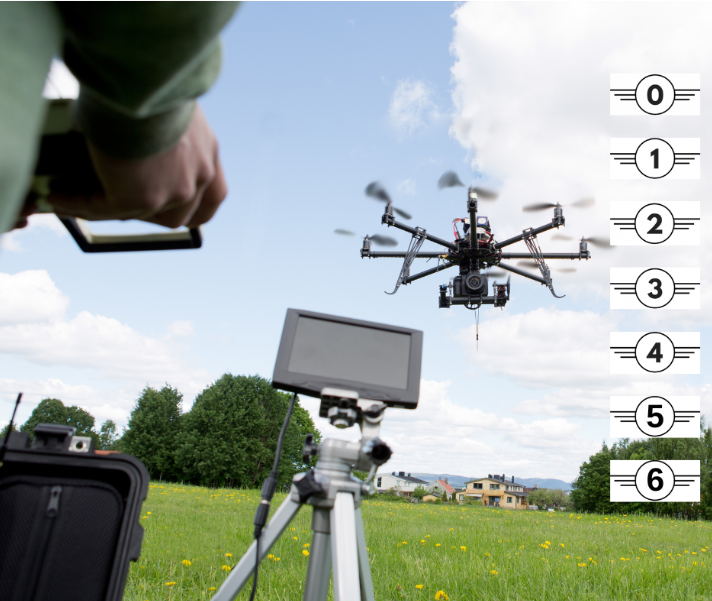The use of Unmanned Aircraft Systems (UAS), also known as drones, has evolved from a purely recreational novelty to a routine tool used in various industries and applications, such as engineering, inspections, mapping, rescue, and cinematography, among others. With this exponential growth, regulatory challenges have emerged to ensure the safety and efficiency of unmanned aircraft in the airspace environment and their use in civilian settings. In this context, the European Union (EU), through the European Union Aviation Safety Agency (EASA), has established a crucial new requirement through the Delegated Regulation (EU) 2019/945: the Class Identification Label (CIL).
The Class Identification Label (CIL) has become mandatory in the EU from January 1st, 2024, as established by EASA with the enforcement of Delegated Regulation (EU) 2019/945. This labeling applies to UAS/Drones that meet the applicable technical and operational characteristics, considering their intention for commercialization and operation within European airspace.

Therefore, UAS/Drone manufacturers must now also consider the Class Label to comply with CE Marking. This is because Regulation (EU) 2019/945 becomes part of the Directives and Regulations that comply with Regulation (EC) 765/2008 on CE Marking (Article 30). Hence, this requirement is linked to the testing and certification process of the aircraft, ensuring that the products and systems meet the necessary requirements of various Regulations and enabling the placement of the respective labels on the product.
Similarly, operators must be aware to ensure that the drones they acquire in this new phase are properly labelled and thus operate in accordance with the provisions set out for them in Implementation Regulation (EU) 2019/947 while also complying with DR (EU) 2019/945. This Class Label facilitates the use of drones and the understanding of the operations that can be performed, considering the associated risks of such manoeuvres and the specific characteristics of each aircraft.
The Class mark will allow operators to select the aircraft that best suits their needs, making the use of these new tools more accessible. For example, if planning to perform a technical inspection of power lines in an area where no concentration of people is expected, one can opt for a drone with a label of Class C3; conversely, if the task involves operations in more populated or built-up areas, a drone with a C2 label can be selected, indicating its capability to operate under such circumstances.
To obtain the Class Identification Label (CIL) and CE Marking, it is essential to highlight the importance of conformity assessment bodies, known as Notified Bodies, responsible for verifying that the aircraft meet the requirements. These Notified Bodies conduct tests that cover both the drone’s performance during flight and its technical characteristics. For example, ALTER, as the Notified Body NB 2031 reference in Europe (accredited by ENAC and notified to the EU by EASA), has the necessary capabilities to perform UAS/Drone testing and certification processes.
Therefore, given the increasing use of UAS/Drones in various applications, manufacturers and operators must consider compliance with DR(EU) 2019/945 along with the Class Identification Label, as applicable. For this reason, Notified Bodies like ALTER can collaborate and assist them in the process of testing and certifying the aircraft, aiming to achieve the commercialization and operation of their products in the European territory.
The original article Normativa Europea: Marcado de Clase para drones 2024 was published in RPAS-Drones digital magazine.
The latest in Regulations
EU Regulation 2021/1166: Postponing UAS standard scenarios
Learn about the amendments introduced by EU Regulation 2021/1166, postponing standard scenarios for UAS operations.
Enhancing UAS safety with Proposed Amendment 2021-09 by EASA
Learn how EASA’s Proposed Amendment 2021-09 aims to UAS safety operations across the EU.
Aircraft regulation transition: UAS operation conditions
Learn about the aircraft regulation transition period in the EU. Understand the conditions for UAS operation until January 2023.




